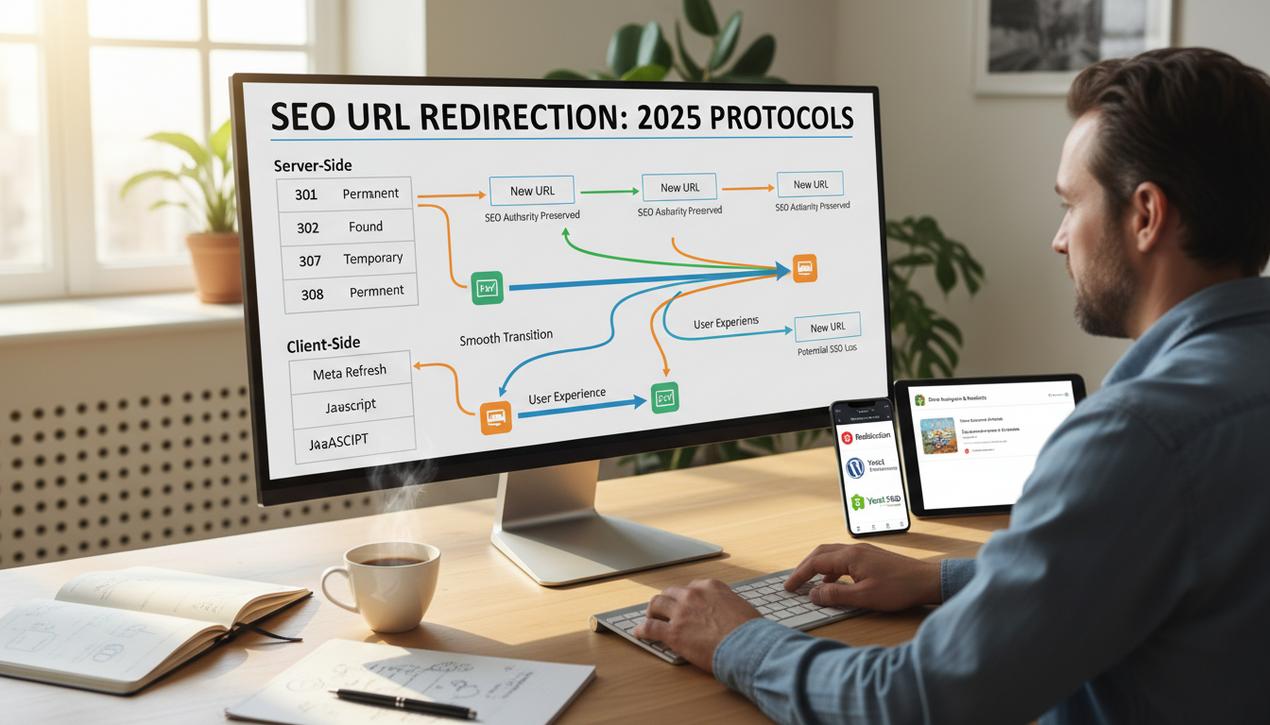AI Search Optimization: Your Guide for 2025


The world of search is undergoing its most significant transformation in a decade. Traditional SEO focused on ranking a page of blue links, but the rise of generative AI in search engines like Bing and Google’s Search Generative Experience (SGE) has rewritten the rules. It’s no longer about just being on the first page; it’s about being the source for the AI’s direct answer. Traffic from AI-powered recommendations to top websites has already surged by over 350%, a clear indicator of this massive shift. For businesses and content creators, understanding how to optimize for AI is no longer optional. This guide provides a comprehensive roadmap to enhancing your content strategy for visibility in this new AI-driven ecosystem.
The New SEO Paradigm: From Blue Links to AI Answers
The fundamental change in search is the move from a list of resources to a direct, synthesized answer. Instead of just ranking pages, AI models now deconstruct content, selecting the most relevant snippets from multiple sources to build a comprehensive response for the user. This means that while your entire page might not rank first, a single paragraph, a list, or a data point from your content could be featured prominently in an AI-generated summary. This new reality demands a shift in focus from broad keyword targeting to creating highly structured, clear, and “snippable” content that an AI can easily understand and repurpose.
Understanding the AI Selection Process
AI algorithms prioritize content that is clear, factually accurate, and well-structured. They act like a meticulous researcher, scanning the web for the most reliable and easily digestible pieces of information to answer a user’s query. Several factors influence whether your content gets chosen:
- Structural Integrity: How well your page is organized with clear headings and logical flow.
- Content Clarity: The use of simple language and short, concise paragraphs.
- Factual Density: The inclusion of specific data, numbers, and verifiable facts.
- Contextual Relevance: How well your content aligns with the specific intent behind a search query.
Mastering these elements is the first step toward winning visibility in the age of AI search. It is less about keyword stuffing and more about providing direct, high-quality answers.
Core Foundations: Structure, Titles, and Coherence
Microsoft’s recommendations heavily emphasize the importance of a strong and coherent content structure, starting from the very top of the page. The trifecta of your page title, meta description, and H1 tag must work in harmony to send a clear signal to AI crawlers about your content’s purpose and value. This initial alignment builds trust and improves the machine’s ability to process your information accurately.
Aligning Your Title, Meta Description, and H1
Think of these three elements as the executive summary of your page. They must be perfectly aligned to communicate your core message instantly.
- Page Title: This should clearly state the specific topic of the content. It’s the first thing both users and AI see.
- Meta Description: This should expand on the title, explaining the value proposition of the page without being a list of keywords. It should entice the click by promising a clear answer.
- H1 Heading: The main heading on your page should either match or logically complement the page title, setting a clear framework for the content that follows.
This top-level consistency is crucial. After the H1, use H2 and H3 tags to break down the topic into logical sub-sections. Each heading should represent a single, distinct idea, preventing information from becoming jumbled and difficult for an AI to parse.
Creating “Snippable” Content for AI Consumption
For content to be featured in an AI answer, it needs to be “snippable”—that is, easily extracted and understood out of context. AI models look for self-contained blocks of information that directly answer a question. Adopting formats that facilitate this process, sometimes with the help of the top AI text generators, dramatically increases your chances of being selected as a source.
Winning Formats for AI Visibility
Integrating these formats where they naturally improve clarity is a powerful strategy:
- Q&A Blocks: Structure content with a clear question followed by a direct, concise answer. This format is perfect for AI to pull directly into its responses.
- Bulleted and Numbered Lists: Ideal for summarizing steps, features, benefits, or comparisons. Lists are structured data that AI can easily parse and present.
- Data Tables: When comparing products, features, or specifications, tables provide highly structured information that is invaluable for AI-generated comparisons.
- Short, Focused Paragraphs: Keep paragraphs to two or three sentences, with each one focused on a single idea. This makes every sentence a potential snippet.
- Key Takeaway Boxes: Use visually distinct boxes to summarize the most important points of a section, making critical information easy to spot and extract.
The goal is to make your content as modular as possible. Each piece should be able to stand on its own while contributing to the whole, making your page a rich repository of potential AI-answer snippets.
The Technical Edge: Mastering Schema Markup
While content structure is vital, technical SEO provides the explicit instructions that AI algorithms need for deeper understanding. Schema.org markup, implemented as JSON-LD, is the most effective way to label your content. It’s like adding name tags to different pieces of information on your page, telling the AI, “This is a product,” “This is a review,” or “This is a how-to guide.” This structured data helps search engines categorize and feature your content with greater accuracy.
Key Schema Types for AI Optimization
Most modern Content Management Systems (CMS), including many of the best no-code website builders, offer plugins or built-in tools to manage Schema markup. Focus on implementing the types most relevant to your content:
- FAQPage: Explicitly marks a list of questions and answers, making it a prime target for AI.
- HowTo: Structures step-by-step instructions for tutorials and guides.
- Product: Provides detailed information like price, availability, and review ratings for e-commerce.
- Article: Identifies key elements like the author, publication date, and headline for blog posts and news.
- Review: Highlights ratings and review summaries, crucial for building trust.
Properly implemented Schema removes ambiguity, allowing AI to process your content with higher confidence and feature it more reliably in relevant answers.
Common Pitfalls That Destroy AI Visibility
Just as important as knowing what to do is knowing what to avoid. Many common web design and content creation habits can make it nearly impossible for an AI to access and understand your information. Microsoft highlights several frequent mistakes that severely hinder AI visibility.
Content Traps to Eliminate Immediately
- Long, Unstructured Walls of Text: Large blocks of text without clear headings or breaks are difficult for an AI to parse and extract specific information from.
- Information Hidden in Tabs or Accordions: Content that is not visible by default on page load is often ignored by crawlers. All essential information should be readily accessible.
- Relying on PDFs for Core Content: While searchable, PDFs are not as easily deconstructed as well-structured HTML. Key content should always be in HTML format.
- Information Trapped in Images: AI cannot read text within an image unless there is descriptive alt text. Never convey critical information exclusively through images.
- Overly Complex Punctuation: Avoid decorative symbols or unusual characters that can confuse algorithms. Stick to standard, clean punctuation.
- Vague or Unsubstantiated Claims: Always back up statements with data, facts, and context. Precise language helps AI categorize and trust your content.
Avoiding these errors is fundamental to ensuring your well-crafted content is not inadvertently hidden from the very systems you are trying to attract.
Advanced Tactics for Future-Proofing Your SEO
Optimizing for AI goes beyond formatting and technical markup. It also involves building topical authority and aligning your content with the principles of Expertise, Experience, Authoritativeness, and Trustworthiness (E-E-A-T). AI models are increasingly designed to prioritize content from trusted sources. Therefore, demonstrating deep knowledge and credibility in your niche is more important than ever.
Building Authority and Trust with AI
To succeed in the long term, focus on a holistic strategy. Create comprehensive content hubs around your core topics, covering a subject from all angles with interconnected articles. This signals to search engines that you are an authority in your field. Furthermore, ensure your content is written by credible authors and backed by transparent sourcing where appropriate. As AI becomes more sophisticated, these signals of trust and expertise will become a primary factor in whose content gets selected for AI-generated answers, ensuring your visibility and relevance for years to come.




